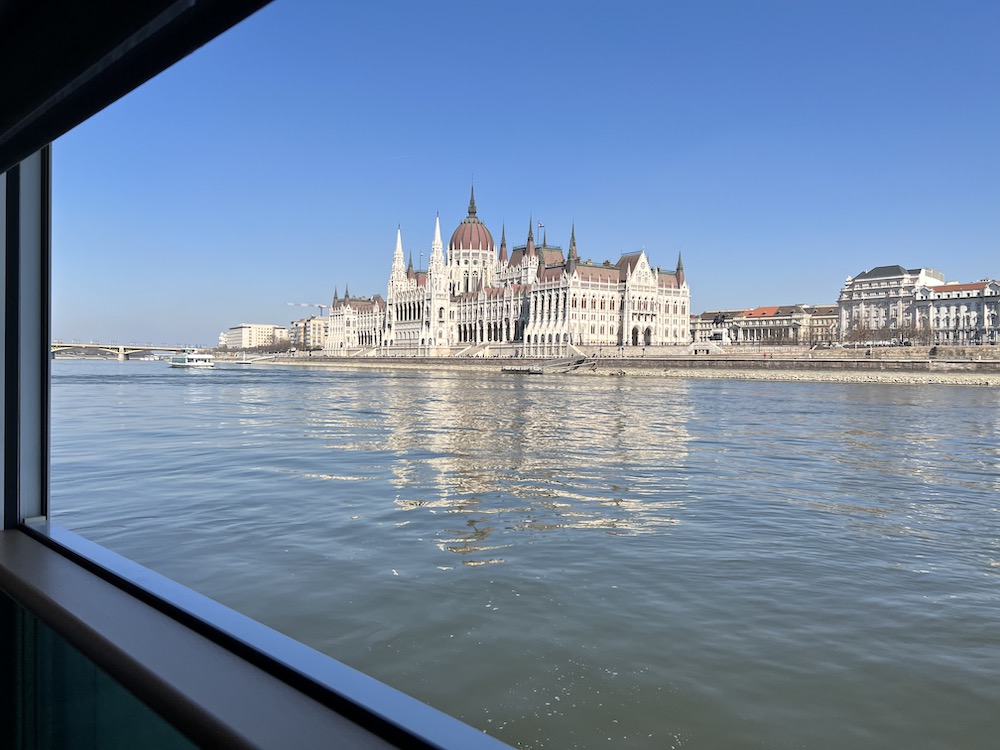How to visit several European cities from the same room…
Which capital cities can I visit on a Danube river cruise?
Imagine visiting three European capital cities but only unpacking once. One of the things I love about river cruise is the opportunity to travel through countries and visit some amazing places along the way. On an Upper Danube river cruise, you can visit three capital cities:
Vienna, Bratislava, and Budapest.
Vienna
A moonlit, night tour was my first experience of Vienna. I was immediately struck by the grandeur, elegance, and wide streets. It was a year later that I returned to explore in the daylight. Vienna is known as a cultural hub of Europe and boasts amazing buildings, galleries, palaces, and churches reflecting its cultural status.
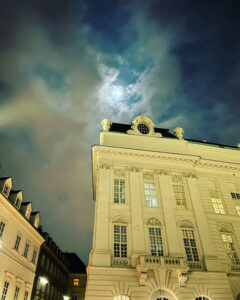
The city’s most striking monument is the awesome, Saint Stephen’s Cathedral, the multi-coloured roof and huge Gothic South Tower dominate the Vienna skyline. There’s also the gigantic Vienna Hofburg, the fascinating, former royal court that is now home to museums, the Crown Jewels, and the impressive Spanish Riding School. The famous, Vienna Boys’ Choir performs here too. Vienna was home to some of the world’s finest classical composers, including Beethoven, Brahms, Mozart and, of course, the Strauss family.
On a visit to Schönbrunn Palace, a former royal residence, you will find museums, galleries and the mouth-watering, strudel making show. This Apple strudel is among the finest in Vienna and I could easily have gone back for more.
No visit to Vienna is complete without a coffee and a slice of delicious, traditional Sachertorte in one of the lovely coffee houses.
Bratislava
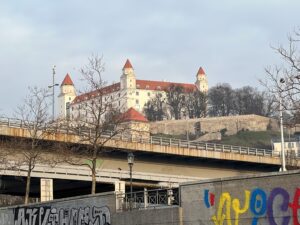
Arriving by river, you’ll see Bratislava Castle perched on a hill, overlooking the old town and the Danube. At first glance, you’ll see four towers but on closer inspection (with a helpful guide), we could see that there is only one authentic tower on the south-west side. The other three are roof structures.
Originally built in the ninth century, the castle was destroyed by fire in 1811. Reconstruction was completed in 1963. Our guide brought the local history to life with stories of Celts, Romans, royalty, and local celebrities. Bratislava Castle retains reminders of all its past tenants and a great storyteller is fascinating.
Medieval Bratislava was a completely walled city, with entry and exit restricted to four heavily fortified gates. The only surviving gate is St Michael’s Gate. In stark contrast to its original role, the gate buildings now house luxury shops. The gate dates back to the year 1300 and is named for the archangel, Michael.
Located in Bratislava’s beautiful Old Town region, the 18th century Primatial Palace now serves as the seat for the Mayor of Bratislava, and the famous Hall of Mirrors provides an enviable location for the city’s council meetings. Formerly the home to archbishops and Slovakian presidents, the palace has played an important role in Slovakia’s recent history.
However, the most photographed attraction in Bratislava is the sewer worker statue named Cumil. This quirky, character was installed in 1997 to add some interest and fun. He proved a little vulnerable and had his head clipped a couple of times before a unique warning sign was installed.
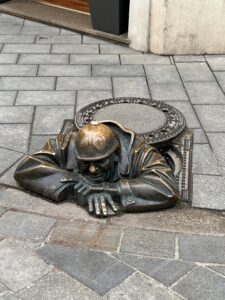
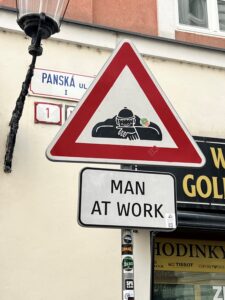
After our city tour, we explored the pedestrian only, 18th century old town, taking in the atmosphere and admiring the architecture. Sipping a coffee outside a local café and watching the world go by was a relaxing treat
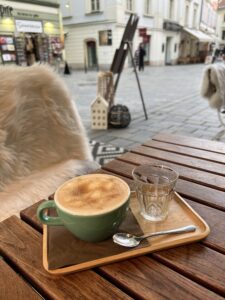
Budapest
This vibrant city is the sum of two halves: Buda and Pest, either side of the river. Arriving in Budapest by river is an unforgettable experience. The stunning Hungarian Parliament building dominates the Pest riverbank. The third largest assembly building in the world, it has 691 rooms. The stairway to the Dome Hall is the grandest of the 28 staircases inside.
In 1881, the Hungarian National Assembly announced an invitation to architects to submit their designs for the building. Apparently, one reason that Steindl’s proposal was chose is that his neo-Gothic plans resembled the Palace of Westminster in London. Hungarian politicians of the 19th century wanted the country’s new parliament building to symbolise their commitment to Western Europe. Having seen both from the river, I can certainly see the resemblance. What do you think?

On the Buda side of the river sits Buda Castle, watching over the city from it’s hilltop position. Built in the 13th century, it is now the home of the Hungarian National Gallery and Castle Museum. Nearby is the splendid Matthias Church which has hosted several royal weddings, baptisms and coronation ceremonies. The Fisherman’s Bastion offers an incredible view of the city and the Parliament Building on the opposite bank. We visited at sunset for a spectacular view.
An imposing suspension bridge, the Széchenyi Chain Bridge, links Buda and Pest. Designed by an English engineer, William Tierney Clark, it was opened in 1849 as the first permanent stone bridge to cross the Danube River. I was intrigued to discover that it is a larger scale version of Marlow bridge in Buckinghamshire, also designed by William Tierney Clark and opened in 1832.
Shoes on the Danube Bank is one of Budapest’s most moving Holocaust memorials. It consists of sixty pairs of cast iron shoes placed on the river bank. It was a joint project by film director Can Togay and sculptor Gyula Pauer. In the last months of World War II, Jews were often lined up on the banks of the Danube and shot before falling into the icy river. Those awaiting execution were given a final order to remove their shoes, which were of great value in wartime. This poignant memorial is incredibly moving.
Budapest Thermal Springs
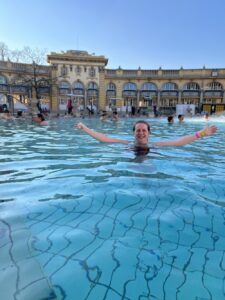
The thermal springs of Budapest are world famous and serve the many local thermal baths. We visited Széchenyi Baths, one of the largest natural hot spring spa baths in Europe. The healing waters are popular with tourists and locals. We explored the 18 pools, and particularly enjoyed relaxing in the large outdoor pools. There are even some swim up chess boards, usually occupied by locals.
With the opportunity to visit these three capital cities in one trip, a Danube river cruise is great value.
If you would like to take a river cruise on the Danube, I can help you find the perfect option.
Jenny Cookman.
